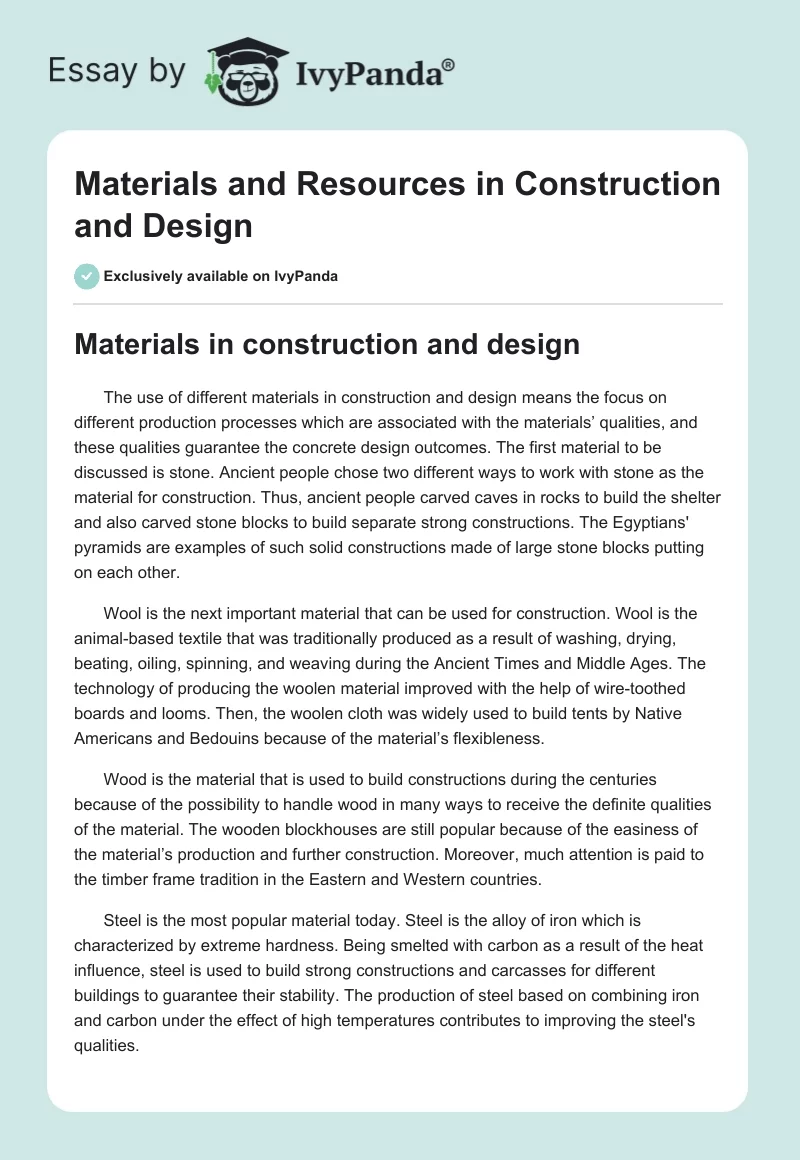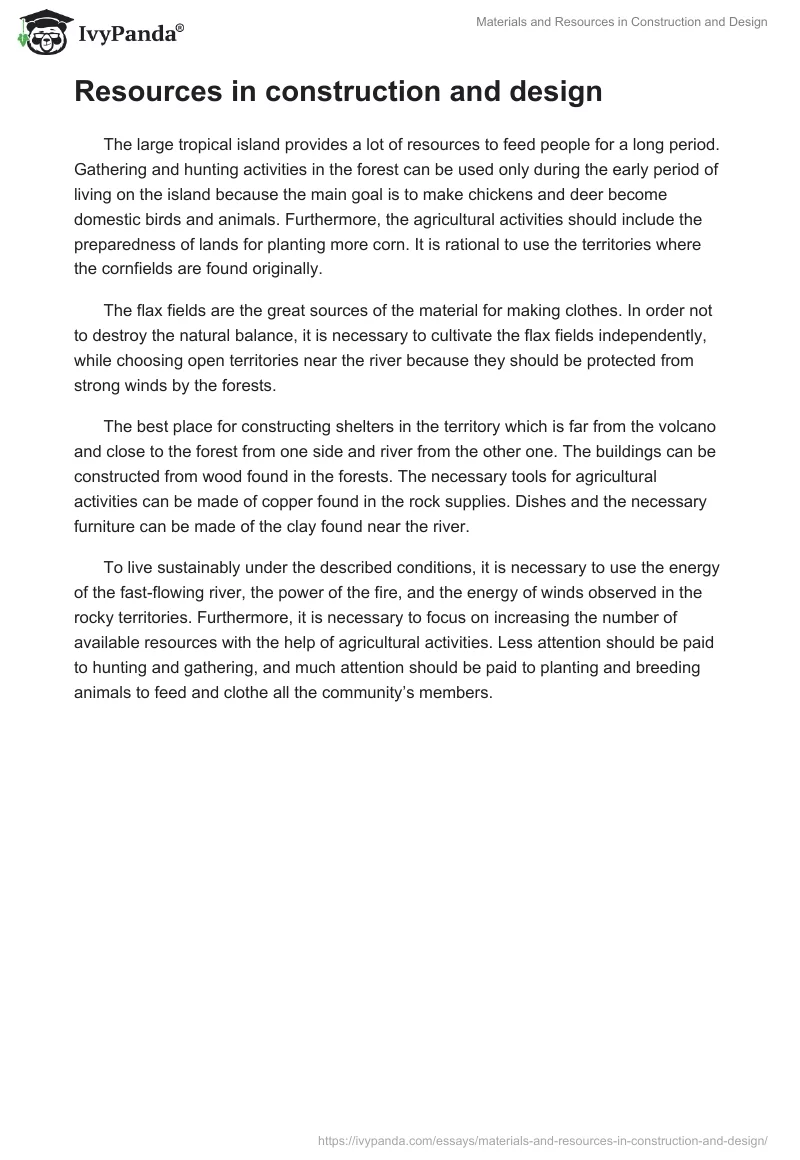Materials in construction and design
The use of different materials in construction and design means the focus on different production processes which are associated with the materials’ qualities, and these qualities guarantee the concrete design outcomes. The first material to be discussed is stone. Ancient people chose two different ways to work with stone as the material for construction. Thus, ancient people carved caves in rocks to build the shelter and also carved stone blocks to build separate strong constructions. The Egyptians’ pyramids are examples of such solid constructions made of large stone blocks putting on each other.
Wool is the next important material that can be used for construction. Wool is the animal-based textile that was traditionally produced as a result of washing, drying, beating, oiling, spinning, and weaving during the Ancient Times and Middle Ages. The technology of producing the woolen material improved with the help of wire-toothed boards and looms. Then, the woolen cloth was widely used to build tents by Native Americans and Bedouins because of the material’s flexibleness.
Wood is the material that is used to build constructions during the centuries because of the possibility to handle wood in many ways to receive the definite qualities of the material. The wooden blockhouses are still popular because of the easiness of the material’s production and further construction. Moreover, much attention is paid to the timber frame tradition in the Eastern and Western countries.
Steel is the most popular material today. Steel is the alloy of iron which is characterized by extreme hardness. Being smelted with carbon as a result of the heat influence, steel is used to build strong constructions and carcasses for different buildings to guarantee their stability. The production of steel based on combining iron and carbon under the effect of high temperatures contributes to improving the steel’s qualities.
Resources in construction and design
The large tropical island provides a lot of resources to feed people for a long period. Gathering and hunting activities in the forest can be used only during the early period of living on the island because the main goal is to make chickens and deer become domestic birds and animals. Furthermore, the agricultural activities should include the preparedness of lands for planting more corn. It is rational to use the territories where the cornfields are found originally.
The flax fields are the great sources of the material for making clothes. In order not to destroy the natural balance, it is necessary to cultivate the flax fields independently, while choosing open territories near the river because they should be protected from strong winds by the forests.
The best place for constructing shelters in the territory which is far from the volcano and close to the forest from one side and river from the other one. The buildings can be constructed from wood found in the forests. The necessary tools for agricultural activities can be made of copper found in the rock supplies. Dishes and the necessary furniture can be made of the clay found near the river.
To live sustainably under the described conditions, it is necessary to use the energy of the fast-flowing river, the power of the fire, and the energy of winds observed in the rocky territories. Furthermore, it is necessary to focus on increasing the number of available resources with the help of agricultural activities. Less attention should be paid to hunting and gathering, and much attention should be paid to planting and breeding animals to feed and clothe all the community’s members.


